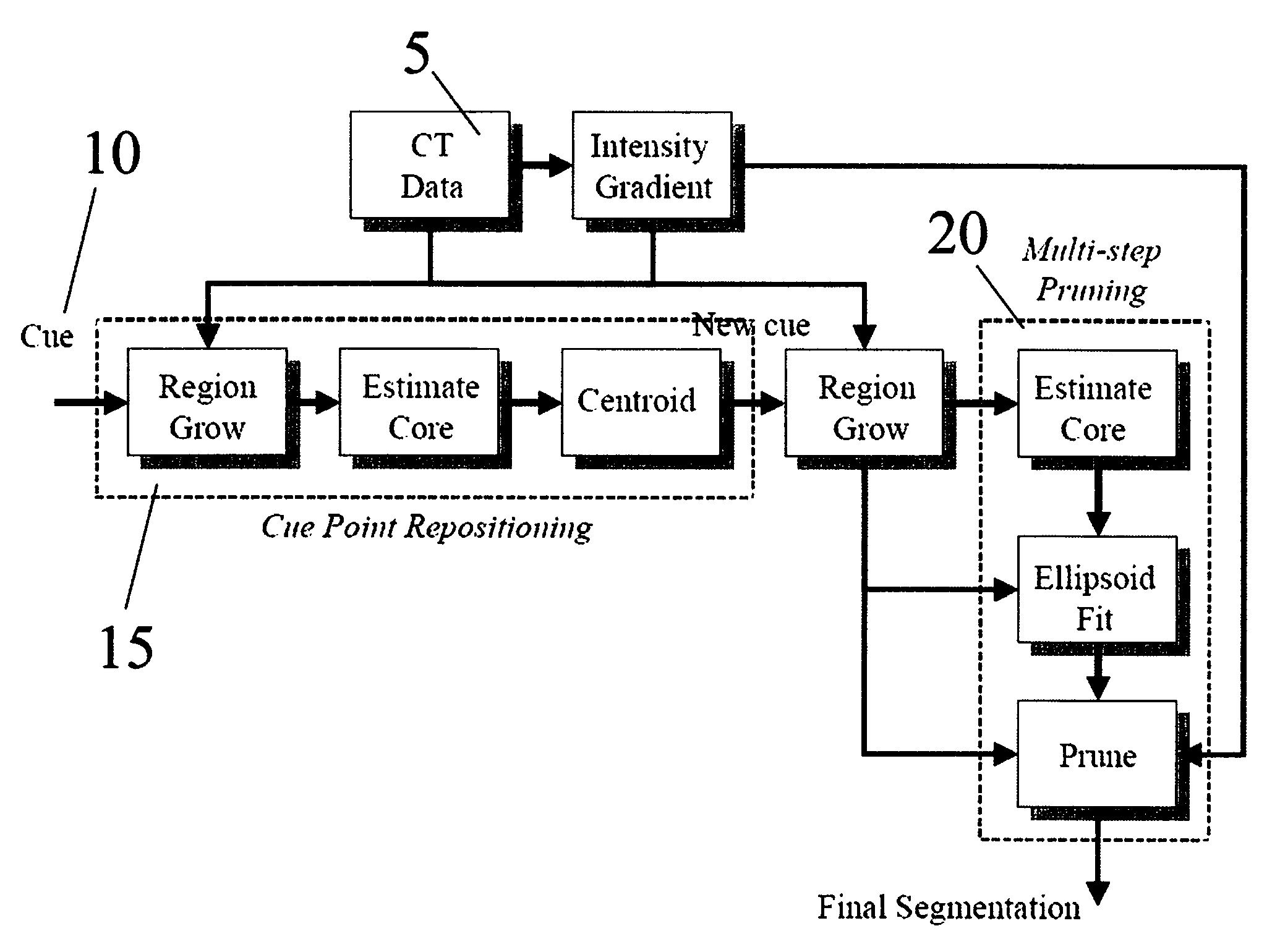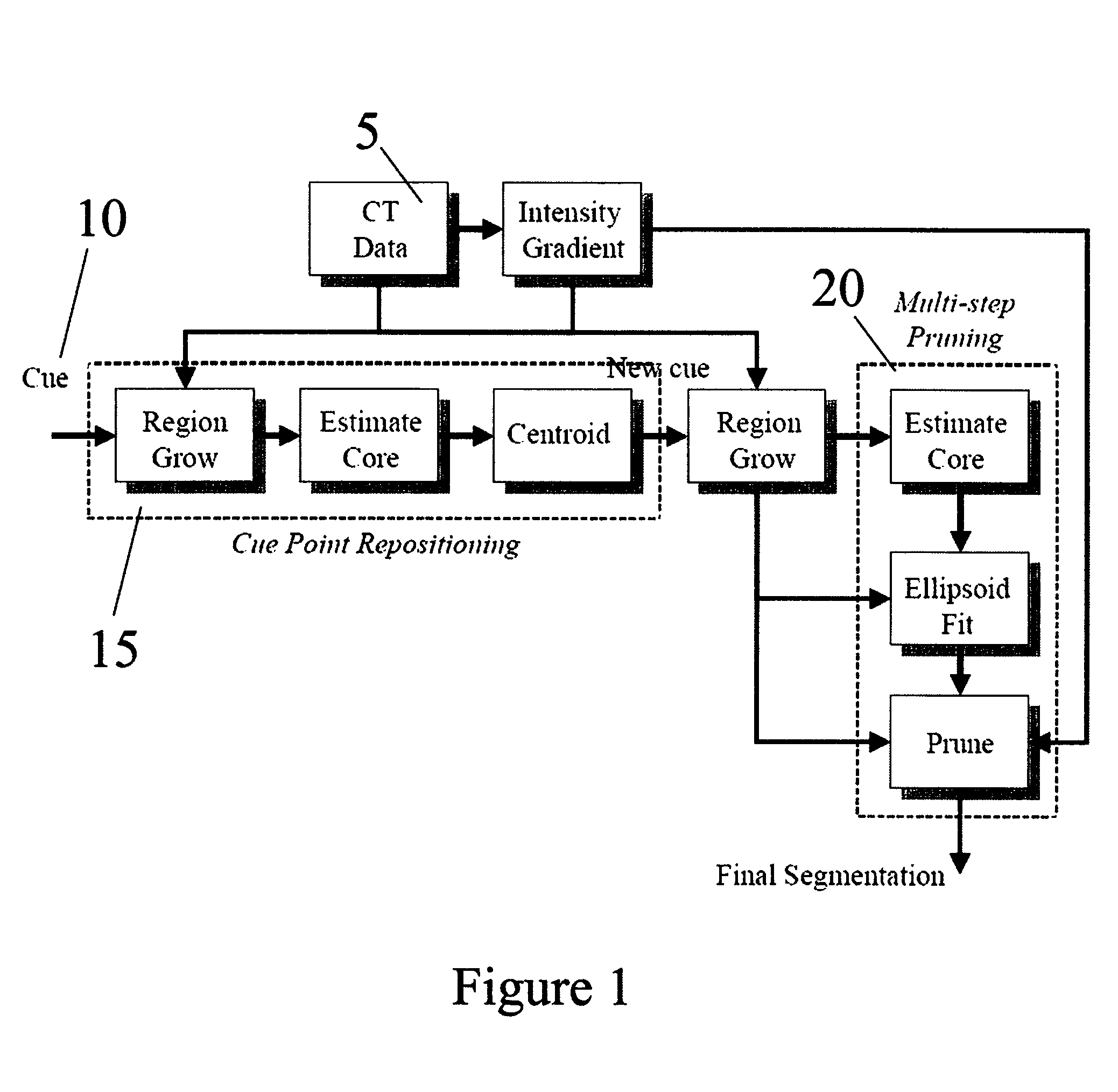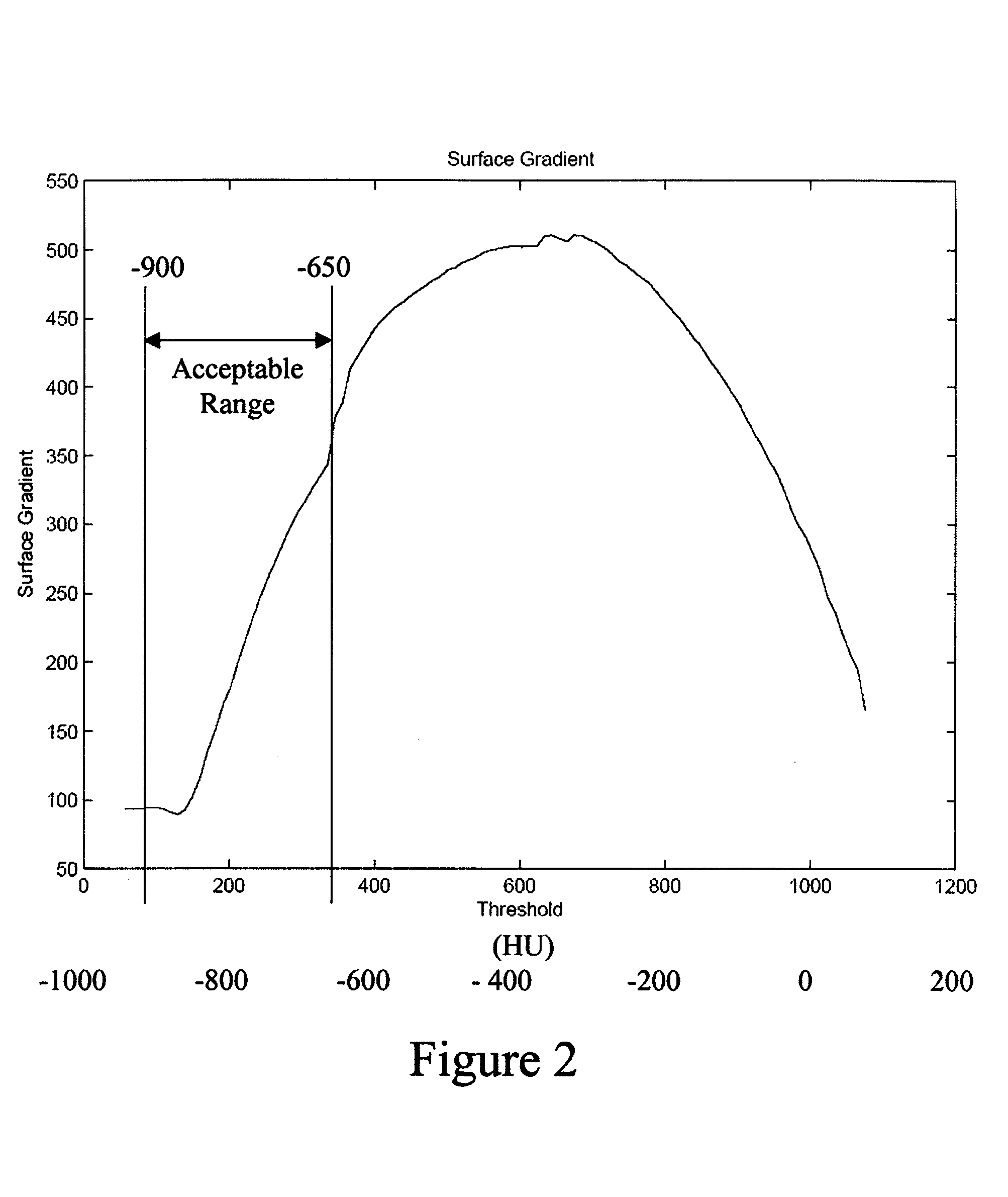Shape estimates and temporal registration of lesions and nodules
a technology of shape estimation and temporal registration, applied in image enhancement, image analysis, instruments, etc., can solve the problems of difficult detection of lung cancer, risk of spreading to lymph nodes in the lungs and mediastinum, and difficulty in lung cancer detection, so as to achieve accurate shape estimation of nodules
- Summary
- Abstract
- Description
- Claims
- Application Information
AI Technical Summary
Benefits of technology
Problems solved by technology
Method used
Image
Examples
Embodiment Construction
[0035]In the following detailed description of the preferred embodiments, reference is made to the accompanying drawings that form a part hereof, and in which are shown by way of illustration, and not by way of limitation, specific preferred embodiments in which the invention may be practiced. It is to be understood that other embodiments may be utilized and that logical, mechanical and electrical changes may be made without departing from the spirit and scope of the present invention.
[0036]A CAD and analysis system can help physicians quickly and accurately identify and analyze problematic regions of the body. For example, CAD systems are used to detect pulmonary nodules and colonic polyps using CT imagery. This invention addresses one part of such as system, a tool designed to segment regions with minimal cueing from radiologists. In a CAD driven embodiment, cueing is provided by detection algorithms. In an interactive embodiment, cues are provided by a user who indicates a cue po...
PUM
 Login to View More
Login to View More Abstract
Description
Claims
Application Information
 Login to View More
Login to View More - R&D
- Intellectual Property
- Life Sciences
- Materials
- Tech Scout
- Unparalleled Data Quality
- Higher Quality Content
- 60% Fewer Hallucinations
Browse by: Latest US Patents, China's latest patents, Technical Efficacy Thesaurus, Application Domain, Technology Topic, Popular Technical Reports.
© 2025 PatSnap. All rights reserved.Legal|Privacy policy|Modern Slavery Act Transparency Statement|Sitemap|About US| Contact US: help@patsnap.com



